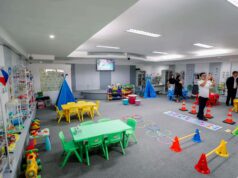WHEN four-year-old Nathan came down with a recurring fever and started complaining of stomach pains last April, his mother Stella thought he was just suffering from wind. Still, she took the boy to the doctor, who said some paracetamol should help ease his symptoms.
However, Nathan’s condition didn’t improve. Finally, when his breathing became rapid and his skin turned cold and clammy, Stella rushed him to a clinic, which immediately sent them to a nearby hospital. Nathan had fluid in his chest and his veins had collapsed.
Doctors, struggling to keep his rocketing blood pressure under control, moved him into intensive care. It was too late: less than two days after being admitted to hospital, Nathan died.
Nathan was a victim of a virulent form of dengue fever, a mosquito-borne contagion that’s rapidly becoming one of Asia’s biggest health problems. “Dengue is a major public health concern throughout tropical and subtropical regions of the world,” reports the Geneva-based World Health Organization (WHO).
According to epidemiologists, many factors contribute to the spreading of dengue fever, including urbanization and increased travel,
which facilitate the dissemination and the circulation of the viral disease. Other factors include unplanned urban development, poor water storage and unsatisfactory conditions, and growing population densities.
“Everyone is eagerly awaiting for an effective and safe vaccine against dengue,” wrote Dr. Rafael R. Castillo, editor-in-chief of H&L, a magazine for health professionals. “This will be a strong front the battle against this killer disease can take.”
There are several vaccines currently being developed but Sanofi Pasteur — the vaccines division of Sanofi — seems to be winning the race. For almost 20 years now, it has been in the forefront in dengue vaccine research. “(It) is committed to helping reduce the public health, economic and societal impact of dengue, particularly as the incidence of dengue fever in Southeast Asia remains high,” Sanofi Pasteur said in a press statement.
Over 40,000 volunteers are participating in the Sanifo Pasteur’s dengue vaccine clinical study program (Phase I, II, and III). In its Phase I and II clinical trials, the dengue vaccine was evaluated in adults and children in the United States, Asia, and Latin America.
Currently, the dengue vaccine is in Phase III clinical studies. In a statement, Olivier Charmeil, president and chief executive officer of Sanofi Pasteur, said: “Today, we are very excited to be in the last stage of clinical development.
We are confident that we will be the fi rst with a dengue vaccine within a few years. A dengue vaccine will fulfil an unmet medical need and change the lives of millions of people across the world.” Last year, Dr. Joselito Sta. Ana, Sanofi Pasteur’s senior director and regional head of dengue vaccines, was quoted as saying: “We have two big Phase III trials (of the anti-dengue vaccine). One is being done in fi ve countries in Asia, and the other one in Latin America.”
Early this year, in April, Sanofi Pasteur announced that the fi rst of two pivotal Phase III efficacy studies with the company’s dengue vaccine candidate has achieved its primary clinical endpoint. “The efficacy study showed a significant reduction of 56% of dengue disease cases,” the press statement said. “Initial safety data are consistent with the good safety profile observed in previous studies.”
According to Dr. Sta. Ana, once the Phase III study is finished, they will know the exact indication of the vaccine — for what age(s) it is appropriate, and various aspects of its use. “Whenever we deal with immune-modulating products like vaccine, the first question we ask is if it’s safe and effective,” Dr. Castillo continued.
“Preliminary reports have been encouraging and there appears to be no safety red flags. We seem to be seeing the light at the end of the tunnel…”
“Dengue is the world’s most important viral disease transmitted by mosquitoes,” declares Dr. Duane Gubler, health administrator of the US Centers for Disease Control and Prevention. “The mosquitoes become infected when they feed on someone who has the virus.”
Also known as “break-bone” fever, dengue is the Swahili term for “a sudden overtaking by a spirit.” Caused by four distinct virus serotypes (varieties recognized as distinct by the immune system), it is a distant cousin of yellow fever.
A more lethal complication, called dengue hemorrhagic fever (DHF), was first recognized during the 1950s and is today a leading cause of childhood deaths in many countries, including the Philippines.
Approximately five percent of all DHF cases are fatal. Without proper treatment, DHF fatality rates reach 15 percent more. “Although dengue is rarely lethal, its contribution to disease and ill health, especially among young children, should make dengue control a primary public health concern,” says Dr. Dominic L. Garcia, an infectious disease specialist.
Dengue viruses are transmitted to humans through the bite of an infected Aedes mosquito. However, not all Aedes mosquitoes are carriers of the dengue virus, but only those that have bitten people infected with the virus.
Once infected, a mosquito remains infective for life, transmitting the virus to susceptible individuals during probing and blood feeding. Just remember this though: an infected individual cannot transmit the dengue virus directly into another person.




